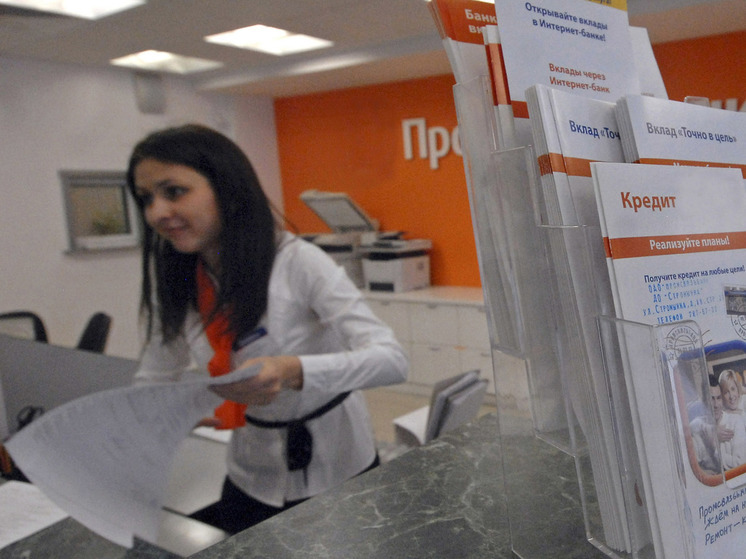The average rate on cash loans exceeded 20%
At the end of the summer, banks together increased the cost of consumer loans. An unpleasant trend for borrowers was formed due to the actions of the regulator and the weakening of the ruble. Since September 1, getting a cash loan has become even more difficult. Especially for people with low official income.
 < span itemprop="width" itemscope itemtype="https://schema.org/QuantitativeValue">
< span itemprop="width" itemscope itemtype="https://schema.org/QuantitativeValue">
According to the Finuslugi platform of the Moscow Exchange, from August 17 to August 24, the average rate on consumer loans jumped immediately by 1.09%, to 20.94% per annum. The rates rose to such a high level for the first time this year.
Recall that loans began to rise in price after the Central Bank, at an extraordinary meeting on August 15, raised the key rate immediately by 3.5 percentage points, to 12 %. After that, banks increased their lending rates so as not to incur losses.
Secondly, from August 16, the Central Bank stopped until the end of this year to limit the full cost of loans for banks. Accordingly, the range of interest rates in consumer lending has expanded towards an increase in the upper limit.
Thirdly, the “nervousness” of the national currency exchange rate had an effect. According to Natalya Vashchelyuk, chief analyst at Sovcombank, the weakening of the ruble was one of the important factors in the growth in demand for loans: “Clients assumed that the growth in the exchange rate of foreign currencies could lead to an increase in prices and interest rates, and they made a purchase decision faster.” According to Frank RG, the volume of cash loans issued in July 2023 was 10% higher than in the same month of 2021, credit card funds — 1.5 times.
Head of the bank's consumer lending group «St. Petersburg» Andrey Afanasiev noted the increased seasonal demand for consumer loans during the summer holidays and on the eve of the new academic season.
Interestingly, the fastest growing rates on cash loans secured. As Inna Soldatenkova, an analyst at AC Banki.ru, explained to MK, this growth is associated with an increase in mortgage rates, since most banks are trying to keep them on secured loans close to mortgages, and rates on the latter in many banks are being actively revised upward against the backdrop of tightening regulation of this segment.
According to Soldatenkova, ruble-denominated non-purpose cash loans are in the greatest demand among borrowers. The predominant part of applications fall within the range of amounts from 100 to 500 thousand rubles, and the average requested loan check amounted to 747 thousand rubles in the second quarter of 2023. “The most common contract term we have is 5 years, the average loan amount is more than 600 thousand rubles,” said Denis Kovalev, director of the retail lending business department at Rosbank.
From September 1, in order to increase the stability of banks, the Central Bank increased the premiums on risk ratios for unsecured consumer loans. According to Inna Soldatenkova, after the innovation, two scenarios for the development of the situation on the market are possible. First, banks will raise rates on such loans, which means that they will become more expensive for borrowers. However, we see that many players are already raising rates on such products, so we do not expect their significant growth in September (provided that the key one remains unchanged). The second is that as an alternative to raising interest rates, banks can simply reduce the range of potential borrowers, leaving relatively acceptable price conditions for trusted clients.
“The decision of the Central Bank to raise premiums to risk ratios will primarily affect clients with a high debt burden, whose mandatory payments exceed half of their income (debt burden ratio (DNR) is above 50%),” said Natalia Vashchelyuk. Also, the restrictions, she said, will affect unsecured consumer loans with a higher total cost of the loan (for example, loans for small amounts). The risk ratios for loans with a total cost of credit (TFR) of less than 25% for borrowers with a moderate leverage (PLC below 50%) will not change. “The growth of consumer lending will slow down in the fourth quarter after the tightening of macroprudential limits: the share of loans to borrowers with PTI above 80% should not exceed 5%,” the expert emphasized.
Igor Seleznev, Director of the Retail Lending Department at Post Bank, expects that in early autumn, there will be an increase in rates on retail consumer loans by an average of 1-3%. Andrey Afanasiev agrees with this assessment: “However, in the 4th quarter, usually many banks issue marketing offers. These specials can hold back further growth and make it possible to get a discounted loan before the New Year.”
According to Soldatenkova’s forecast, the weighted average rates on consumer loans, provided that borrowers refuse voluntary life and health insurance, may be repeated in the near future spring highs of 2022 and exceed 24% per annum. “Thus, in the current realities, only high-quality borrowers with a sufficient level of income and an optimal level of financial burden, primarily uncredited ones, will be able to get loans,” the analyst concluded.


